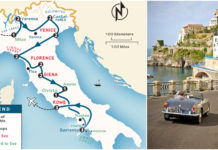
 Sinkholes (known as voragine) and subsistence are a major problem in central Rome.
Sinkholes (known as voragine) and subsistence are a major problem in central Rome.For most of the past century, Rome recorded an average of 30 sinkholes or other collapses per year, but since 2008 the annual figure seems to have tripled.
Some of the worst-affected areas are the oldest parts of the city, including the area around the Colosseum, as well as the ancient Appian Way.
Part of the problem is simply Rome’s geology: founded above a floodplain, much of the modern city rests on soft, sandy soil that is easily eroded by water or the vibrations of thousands of cars and scooters traversing the streets daily.















